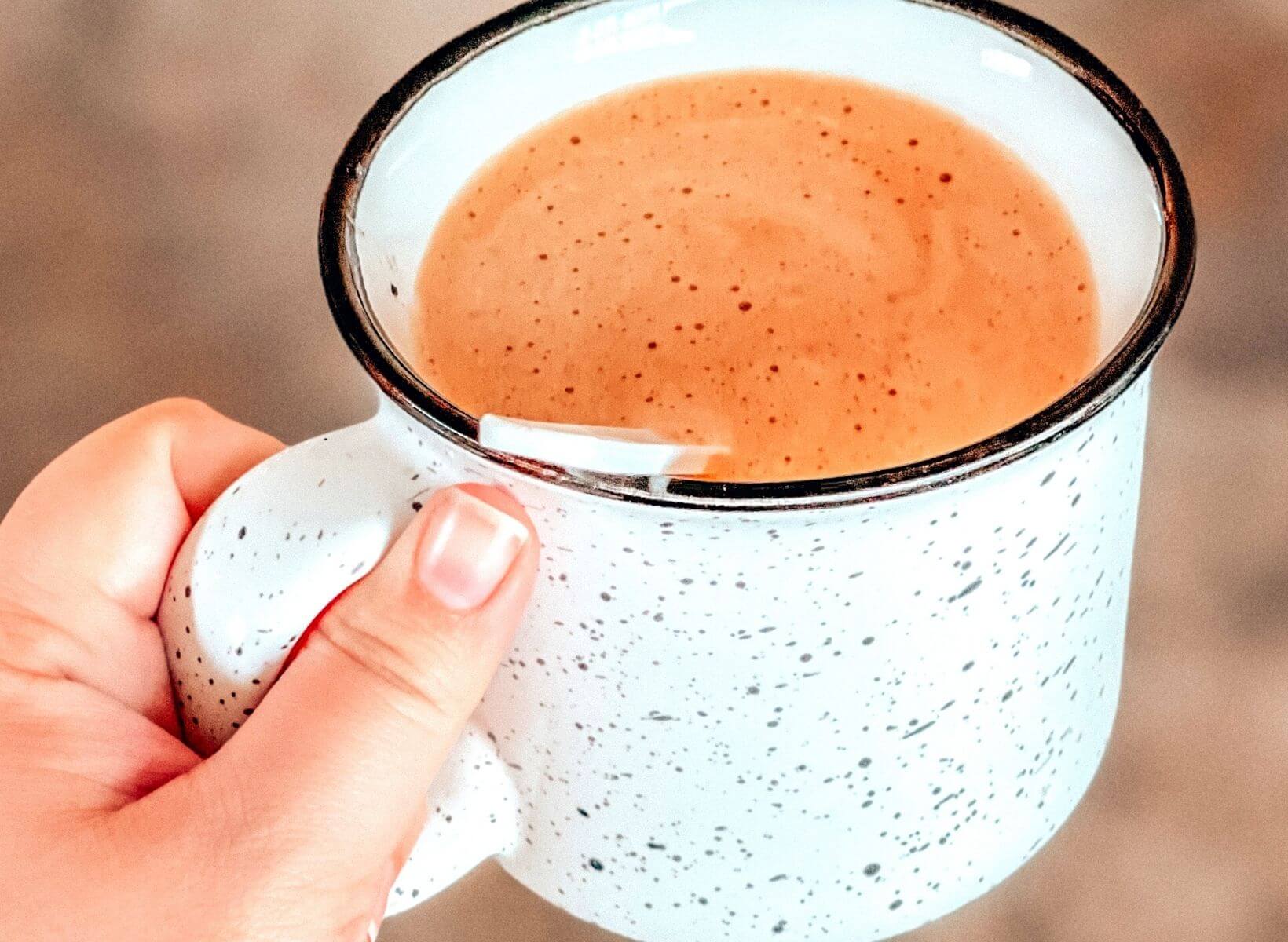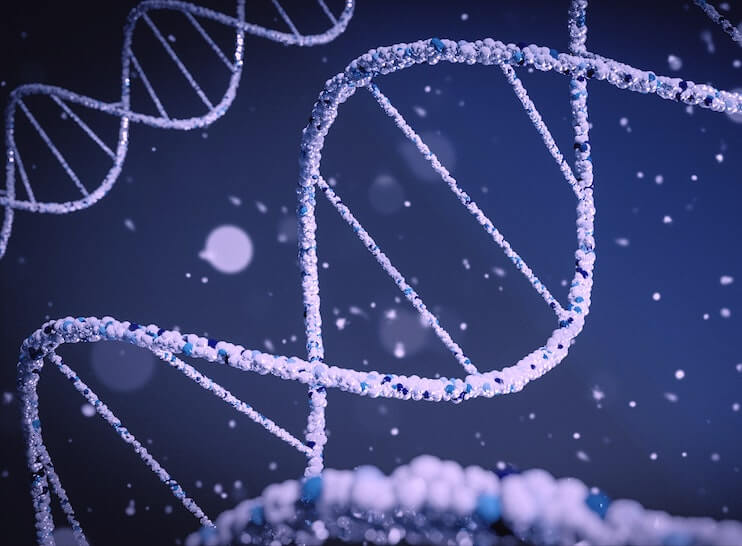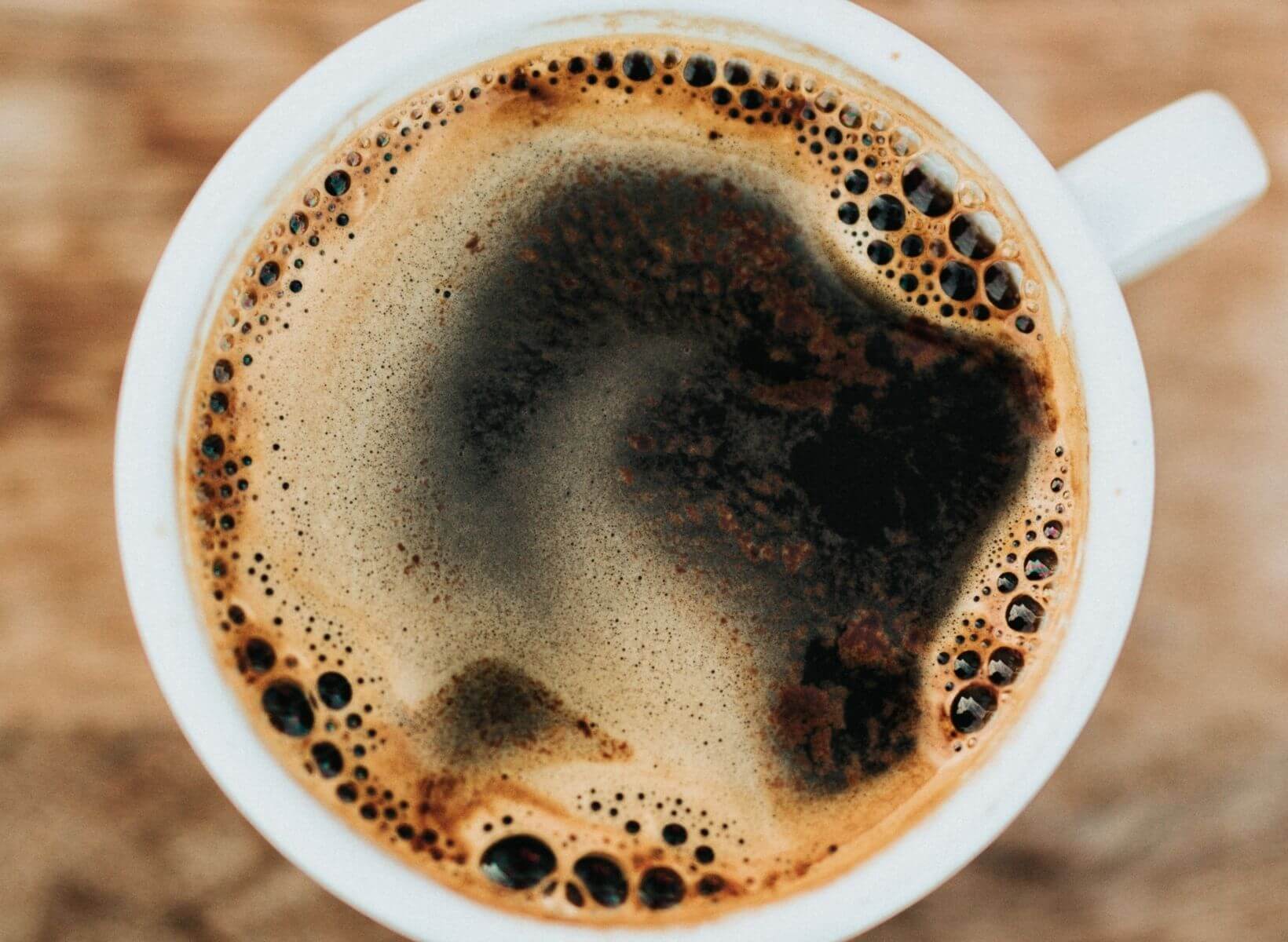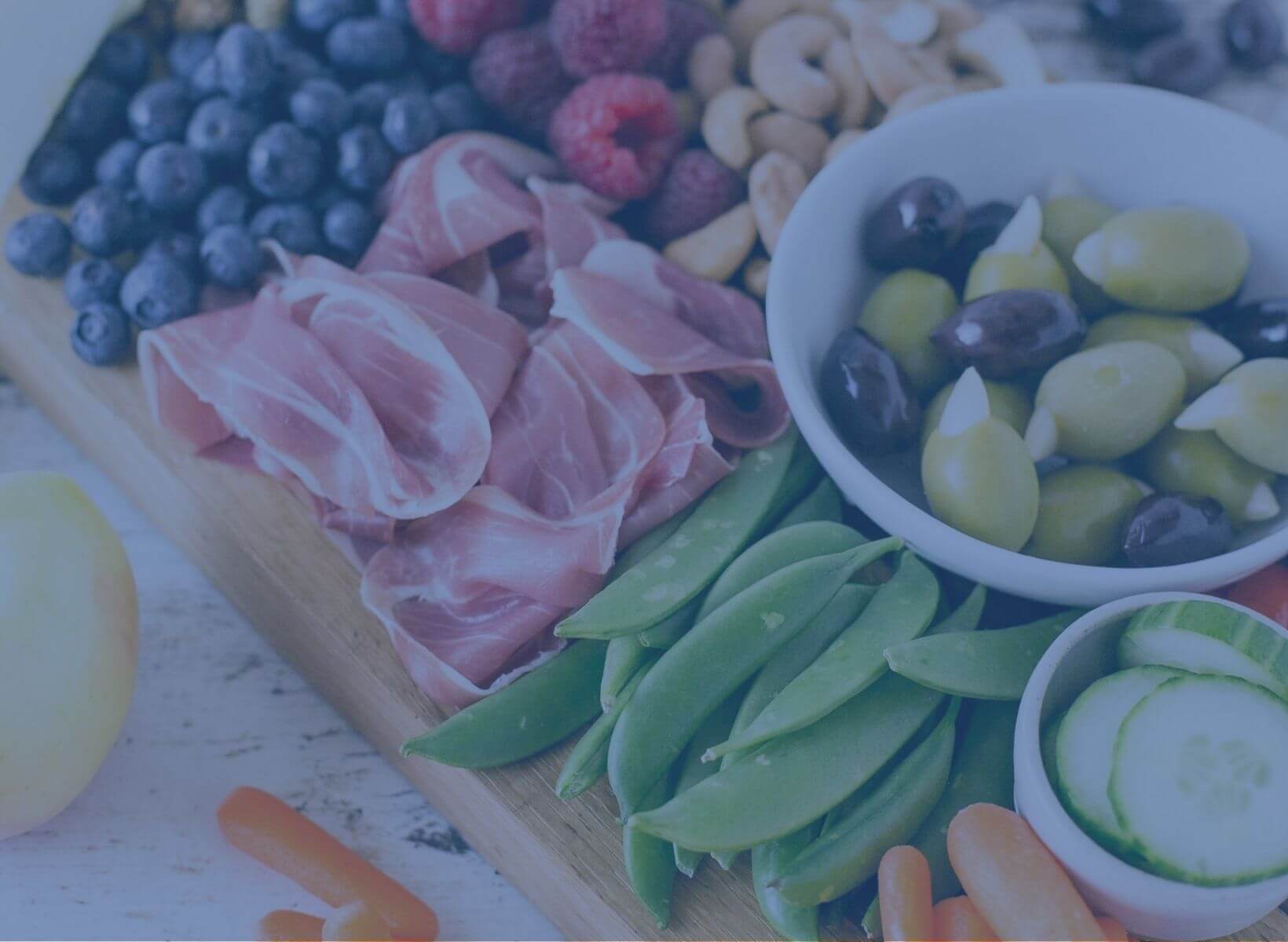Weight loss can be complicated. Like a fly buzzing around the room that vexes and escapes capture, we haven’t found a way to eradicate obesity, overweight, the quarantine 15 (or is it the pandemic 20ish?), holiday weight gain, etc.
We try. And we spend a lot of money trying to lose weight. Business Wire forecasts that the global market for weight loss products and services should grow from $254.9 billion in 2021 to $377.3 billion by 2026.
Health tech is a growing segment of the multi-billion dollar weight loss industry, from MyFitnessPal illustrating the efficacy of logging your food intake to Fitbit encouraging us to get more steps each day to Noom using a psychology-based approach to try to change the way you think about food. These pieces of the puzzle can help but don’t offer a truly personalized approach to weight loss. This is where continuous glucose monitoring can make a difference.
Glucose tracking via a continuous glucose monitor (CGM) in non-diabetics allows you to see your metabolism working in real-time. You can see how your body responds to the food you eat, the exercise you do, how much you sleep, and how often you stress by watching how these things impact your glucose.
<p class="pro-tip">Also Read: The Scientific Evidence for Using CGMs for Weight Loss</p>
Before we delve into how your glucose data can inform weight loss, let’s reconsider the calorie and whether it should remain on a weight loss pedestal.
Weight Loss Is More Complex Than Calories
The “calories in, calories out” method attempted to show people that weight loss can be simplified to a mathematical formula. Touted for years, this principle that you will lose weight by existing in a caloric deficit isn’t as precise as it seems.
Consider: How can you know precisely how many calories you actually ingest and use every day… and even if you devise a way to wade through the minutiae to find the answer, the daily response is a moving target.
While smartwatches and devices are getting better at approximating calories burned from movement and simply surviving, these numbers are estimates. Same for the number of calories you burn during rest. Although smart, these devices aren’t intuitive enough to adjust for the possibility that eating in a caloric deficit can reduce your basal metabolic rate <sup>1</sup> (the number of calories you burn at rest).
You can log every morsel and sip you take every day in an app but the daily total number of calories you consume can be impacted by human error (did you measure every ingredient precisely), not considering the thermic effect of food (what our bodies burn to digest, even if this number can be small), and not accounting for the ways in which our gut microbiomes may determine<sup>2</sup> how well a calorie-restricted diet could work for each of us.
Food logging and activity tracking serve other important purposes, such as accountability and a trove of compiled data that can help show trends over time, but these methods only paint broad strokes on the total weight loss picture.
Other information that can provide more personalized, precise, timely information that’s actionable: your glucose data. Collected by a CGM and synced to an app that helps reveal and interpret the findings, glucose tracking can help you connect the dots between the ways your blood sugar can impact weight loss. It’s the missing piece of personalized data that helps contextualize the health data you may already be tracking via apps or a smartwatch.
What Glucose Levels Can Reveal About Your Metabolism

Excess body fat accumulates in our adipose tissue when we don’t use the fuel we’ve eaten, so the body stores it for later use. If later becomes never, that’s when weight gain and other health-related problems arise.
What signals our bodies to store the food we eat as fat? Insulin is often assigned as the culprit.
In reality, insulin is a hormone secreted by the pancreas to manage the amount of glucose in your bloodstream. A 154-pound person has roughly 4 grams (about a teaspoon) of glucose circulating in the blood<sup>3</sup>, an amount critical to maintain normal cell function. Insulin helps regulate this amount of glucose after you eat (which can raise your glucose) and when you exercise (which can also raise your glucose, depending on the effort).
Insulin stops the flow of energy stored in your liver, muscles, and fat tissue until you use the energy that’s circulating in your blood from your last meal.
When you’re metabolically healthy—aren’t insulin resistant and don’t have prediabetes or diabetes—your pancreas releases just the right amount of insulin to maintain glucose homeostasis.
If you eat a lot of carbs or high-glycemic carbs, your glucose will rise and so will your insulin<sup>4</sup>. If you consume a carb-fat combo (like cheese and crackers or a latte), your glucose response may be smaller initially, but glucose and insulin levels can become elevated<sup>5</sup> after a couple of hours.
Protein also stimulates insulin secretion, and combining carbs with protein or carbs with fiber and a little fat can reduce your glycemic response<sup>6</sup>.
The big picture: Food can cause our glucose and insulin levels to rise before lowering and stabilizing again. If your glucose lowers and stabilizes within a reasonable amount of time (within an hour or two after the spike), you should be alright, metabolically speaking.
What you want to avoid is constant spikes and dips over many days, months, and years because this can lead to insulin resistance, metabolic syndrome<sup>7</sup>, excessive weight gain<sup>8</sup>, type 2 diabetes<sup>9</sup>, and other diseases.
How Glucose Data Can Inspire Behavior Change That Can Lead to Weight Loss
You can use a CGM to see your unique glucose response to different foods and how those responses may prompt you to change your behaviors. It’s changing little things over time that can add up to slow-but-steady weight loss that’s sustainable. Here’s what using a CGM may teach you:
1. Eating high-glycemic carbs without fiber will likely spike your glucose. After the rise and fall, you may notice that you crave more food, even if you ate semi-recently.
Meals or snacks that contain high-glycemic carbs without fiber will raise your glucose quickly. Sugary drinks like juice or soda can spike your blood sugar quickly and make it drop dramatically; this may make you feel shaky, fatigued, and hankering for more calories to bring your glucose up to baseline.
One study on healthy adults noted that high-glycemic foods can suppress leptin<sup>10</sup>, a hormone that helps regulate energy balance by hampering hunger, whereas low-glycemic meals instigate a metabolic response that encourages people to eat less.
Another study points out the impact high-glycemic foods can have on your brain’s reward system<sup>11</sup>; they can create a cycle of wanting to eat more high GI foods not long after your glucose rises and dips from the first high-GI meal. That’s science speak for cravings—that “need” to eat more than one Maui onion potato chip is real.
{{mid-cta}}
A 2021 study of people under real-world conditions wearing continuous glucose monitors showed that lower glucose dips following a meal were predictive of eating sooner and consuming more calories<sup>12</sup> at the next meal. You may have experienced this after eating orange chicken with white rice or chow mein at the mall. The sweet, greasy, high-glycemic meal can leave you full and sluggish immediately after, but you may feel the urge to eat again two hours later.
When a group of overweight, healthy adults consumed a low-fat, high-carb breakfast, they experienced higher post-meal insulin, a more rapid rise and fall in peak glucose, and more hunger<sup>13</sup> at 3-4 hours after the meal compared to a group that ate a high-fat, low-carb breakfast. The rise and fall in glucose (versus the total concentration of glucose) likely explained the earlier return of hunger in the low-fat, high-carb group.
You can also consider a nutrient-rich fiber-protein combo like a veggie scramble. Research shows that a high-protein morning meal increases secretion of hormones that promote satiety<sup>14</sup>.
2. Shake a leg (two legs, to be exact) after you eat high-GI foods to burn off the energy and return your glucose to normal levels. When you feel that burst of energy from the sugar, that’s your cue to move.

If you do eat high-glycemic carbs or drinks that can raise your glucose quickly, exercise within 30–45 minutes of consumption to bring your blood sugar down. How long and how hard you’ll need to exercise can vary (depending on how fit you are, what and how much of it you ate, etc.) but Signos members have seen glucose-stabilizing results from 10–15 minutes of HIIT, 10 minutes of intense kettlebell work, a 20-minute brisk walk, a 2-mile run, a 30-minute full body strength workout, etc. Point is, just move.
Wearing a CGM can prompt you when to exercise according to how much glucose is floating in your bloodstream. When your glucose increases, likely after a big meal or higher-GI meal, the Signos app will prompt you to move to burn up that extra energy. One small study on overweight adults validated CGM use as a tool to turn thinking about exercise into actually doing exercise<sup>15</sup>.
3. Eating foods that stabilize your glucose is a good start, but focusing on food quality and nutrient density are as important for vitality, satiety, and getting to—and maintaining—a healthy weight.
For example, high-fat foods may keep your glucose stable, they can also contain a lot of calories—and, depending on the food, not a lot of nutrient density or variety. Take keto butter coffee as an example. It’s coffee, grass-fed butter or ghee, and MCT oil used as a meal replacement with no fiber, protein, carbs, and limited micronutrients but a whole lotta saturated fat: 21 grams<sup>16</sup>.
Your glucose may remain stable, but your body still needs to burn through the energy from that keto latte before it can tap into any stored fuel. You also didn’t feed your body the nutrition it needs so even if the coffee didn’t kick you out of ketosis, question if and how this food or drink gives you the fuel you need.

This example isn’t intended to demonize any one food or drink, but rather to get you to consider two points:
- Just because a food or drink may keep your glucose stable doesn’t necessarily mean it’s superior, nutrition-wise and even weight loss-wise, than another.
- Context matters. What else do you eat during that day that’s satiating, wholesome, and nutritious?
What should you eat then?
This research<sup>17</sup>, which supports a causal relationship between glucose-stimulated insulin secretion and obesity, suggests a low-glycemic diet to reach a healthy weight and maintain it.
Learn all about a low-glycemic diet and ways to implement it with this simple seven-day low-glycemic meal plan.
That said, the occasional treat that may spike your glucose and, more importantly, whole foods with a moderate glycemic index that may cause your glucose to rise can still be on the table. While a sweet potato or apple or even edamame might cause an increase in glucose for some, these nutritious foods provide vitamins, minerals, and fiber that your body needs. Don’t shun them if you like them because, while food is fuel, it should also provide enjoyment.
Remember, life is about balance, and good health is a priority. If you can’t eat a slice of (real, not keto) cake on your birthday if you want to, you’re unlikely to stick to that way of eating for life.
4. CGM use, combined with food and activity tracking, can keep you accountable and chipping away at your weight loss goals.
While most published research on CGM use was conducted on diabetics, these results demonstrate that the accountability measures the technology provides can translate to non-diabetics, too. Diabetic participants who followed the GEM (glycemic load, exercise, monitor glucose) paradigm using CGMs had an average 17-pound weight loss over three months<sup>18</sup>—with significant reductions in BMI, blood pressure, and more.
A study of patients with poorly-controlled type 2 diabetes showed that participants who used continuous glucose monitors (vs. finger sticks) for just nine days over the course of three months lost about 5 pounds, decreased calorie intake, and increased weekly exercise time. Even intermittent use of a CGM showed potential to incorporate lifestyle changes that lead to weight loss<sup>19</sup>.
This review emphasizes the role continuous glucose monitors can play in lifestyle changes, weight reduction<sup>20</sup>, and the potential to decrease the use of insulin and other medications in patients with types 1 and 2 diabetes and prediabetes.
5. A CGM can reveal your fasting glucose; current glucose level; and how your glucose reacts to specific foods, food combinations, activities, sleep, and stress. These metrics are data points that should always be interpreted contextually and thoughtfully.
This is a lot to unpack, so let’s break down each metric individually.
Your fasting glucose: The number is like a window that gives you a glimpse at your metabolic health. For non-diabetics, normal fasting glucose ranges from 72–100 mg/dL. You might notice that your fasting glucose may differ from day to day; it can be impacted by things like the dawn effect (when glucose is released in the morning to give you energy to get up and at ‘em), stress, dehydration<sup>21</sup>, and short sleep duration<sup>22</sup> in healthy people.
Generally, if your fasting glucose sits in the normal range, you should be metabolically healthy. If your fasting glucose is on the higher end of the range or even slightly above the normal range, if you start making changes to your diet, hydration, exercise, sleep, and stress management, you’ll likely see that your fasting glucose improves over time. Isn’t it amazing how our bodies can repair and adapt under ideal conditions?
Your current glucose: While just a number and moment in time that will change, your current glucose can tell you if your glucose is in a normal, stable range—before eating, that ranges from 72–100 mg/dL and after eating it should be 140 mg/dL or less. Depending on the circumstances, your current glucose can be a number you can use to tell if you should eat or delay eating until later. This doesn’t apply to everyone in all conditions, but can be an experiment to see if your glucose aligns with your hunger level.
For example, if your current glucose is 80 and you feel hungry, it might be a good time to eat a nourishing meal or protein-rich snack.
If your current glucose is 100 and you feel snacky but not truly hungry, push off eating and take a short walk or move around for 10 minutes (micro workouts are ideal for times like these) to burn a little bit of the glucose in your bloodstream. Check your glucose after you move, see if it changed any, and assess your hunger. Do you feel a rumble in the tummy and does a satiating meal of chicken, broccoli, and quinoa sound better than the two handfuls of kettle corn you considered before your walk? You get the idea.
Glucose reactivity to events: So many things can spike your glucose, or cause it to become elevated for a time including foods, drinks, stress, short or poor sleep, exercise, time of day, and even sunburn and illness. As discussed above, glucose rises and falls naturally when we eat and can rise and fall when we exercise. An increase and even spike in glucose caused by exercise is positive and a natural response to your liver providing you with the energy you need<sup>23</sup> to power your workout.
So, how can all of these glucose numbers impact weight loss?
These numbers can inform the lifestyle choices we make that can lead to weight loss.
One thing to keep in mind when interpreting glucose data with an eye toward weight management is oxidative priority of macronutrient disposal. That’s a technical way of saying that your body burns through the easiest-to-access fuel first. Most of the time, that’s carbs. If you don’t eat many carbs, it can be ketones, and eventually fat.
When you want to lose weight and increase your lean mass, you need to burn through your fat stores and they're vast, representing 92–98% of all stored energy. Only 2–8% of your body’s stored energy comes from carbs. You’ll have to work to access those fat stores, though. Fat sits at the bottom of a hierarchy that determines fuel selection, and its oxidation is decided by the presence or absence of other macronutrients.
The rate at which fat stores are used also depends on the intensity of energy expenditure<sup>24</sup>. When it comes to burning through fat stores, exercise counts.
Fasting, or intermittent fasting, is another strategy to delve into fat stores but that’s another topic that deserves its own article.
Signos Podcast: Listen to Bio-hacking with Melanie Avalon discuss Intermittent Fasting, and other weight loss topics on our podcast.
All of this isn’t to say that food choices, total daily energy expenditure, sleep quality, and even calories (in the sense that you’re not overeating and under eating) don’t matter for weight loss. It ALL matters and works together synergistically.
References
- https://www.sciencedirect.com/science/article/abs/pii/
- https://www.frontiersin.org/articles/10.3389/fnut.2021.718661/full
- https://www.ncbi.nlm.nih.gov/pmc/articles/PMC2636990/
- https://nutritionj.biomedcentral.com/articles/10.1186/
- https://link.springer.com/article/10.1007/BF00252263
- https://academic.oup.com/ajcn/article-abstract/42/3/449/
- https://www.sciencedirect.com/science/article/abs/pii/
- https://www.jci.org/articles/view/10842#SEC4
- https://www.sciencedirect.com/science/article/abs/pii/
- https://www.karger.com/Article/Abstract/112309
- https://academic.oup.com/ajcn/article/98/3/641/4577039
- https://academic.oup.com/ajcn/article/98/3/641/4577039
- https://www.sciencedirect.com/science/article/abs/pii/
- https://academic.oup.com/ajcn/article/83/2/211/4649849
- https://pubmed.ncbi.nlm.nih.gov/32066620/
- https://www.bulletproof.com/recipes/bulletproof-coffee-recipe/
- https://academic.oup.com/clinchem/article/64/
- https://care.diabetesjournals.org/content/39/5/e71
- https://www.diabetesresearchclinicalpractice.com/article/
- https://journals.sagepub.com/doi/10.1177/
- https://www.cdc.gov/diabetes/library/spotlights/blood-sugar.html
- https://www.sciencedirect.com/science/article/abs/pii/
- https://www.ncbi.nlm.nih.gov/pmc/articles/PMC4826571/
- https://www.sciencedirect.com/science/article/abs/pii/
More Signos Articles About Glucose & Blood Sugar
Glucose & Blood Sugar FAQs
- What Is Glucose?
- What Is Glycemic Index and Glycemic Load?
- What Are Normal Blood Sugar Levels?
- How Does A CGM Work?
- Why Should You Track Your Glucose?
- How to Mitigate High Glucose Spikes to Avoid Fat Storage
- What Is Impaired Fasting Glucose and Why Does it Matter for Your Health?
- Why Is Your Blood Sugar Higher in the Morning?
- What Should Your Blood Sugar Be at Bedtime?
- Can You Lower Blood Sugar by Drinking Water?
- Can Stress Cause High Blood Sugar?
Lowering & Stabilizing Your Blood Sugar
- How to Exercise to Lower Blood Sugar Quickly
- Lower Blood Sugar Fast
- Everyday Foods That Stabilize Blood Sugar Levels
- Stable Blood Sugar: How To Reap and Keep the Benefits
- The Relationship Between Alcohol and Your Blood Sugar
Low-Glycemic Diet
- Low Glycemic Diet & Tips for Managing Blood Sugar
- 7-Day Low Glycemic Diet Plan
- 5 Low-Glycemic Dinner Recipes for Busy Weeknights
- Easy Low-Glycemic Lunch Ideas From an RDN
- Low-Glycemic Snacks for Healthy Eating Between Meals
- Low-Glycemic Recipes for Summer
- Low Glycemic Recipes for Fall
- Item 1
- Item 2
- item 3
































